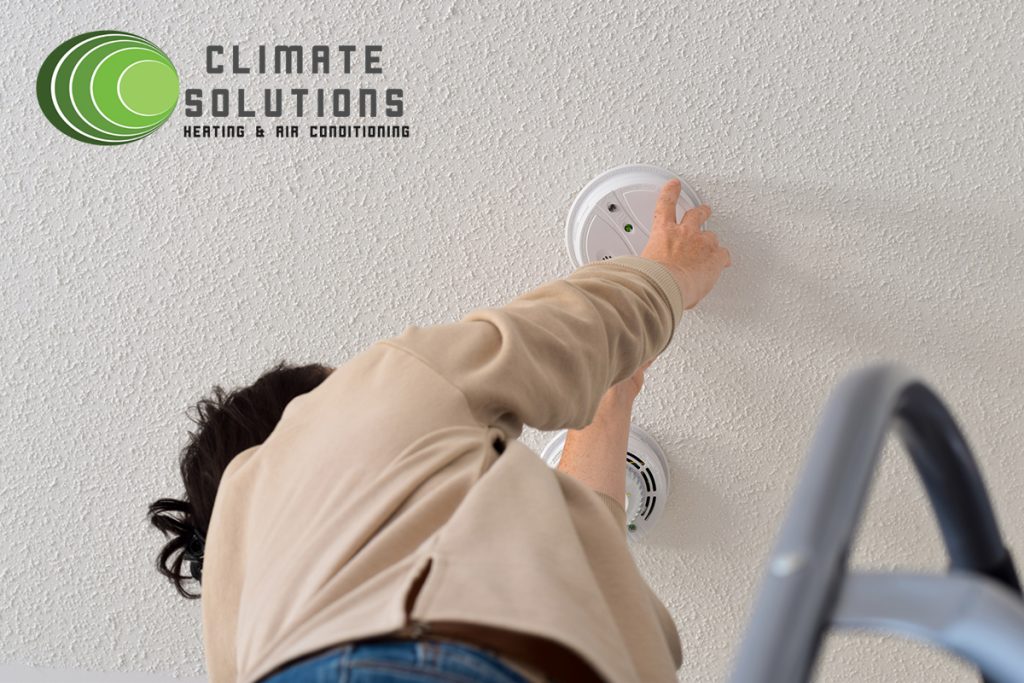As winter sets in and heating systems run for longer periods of time, carbon monoxide (CO) safety becomes a critical concern for homeowners. Carbon monoxide is a colorless, odorless, and tasteless gas—making it nearly impossible to detect without proper equipment. When produced by malfunctioning or poorly vented fuel-burning appliances, CO can accumulate indoors and put your household at serious risk.
Understanding the dangers of carbon monoxide, recognizing the symptoms of exposure, and knowing how to protect your home are essential steps every Gillette homeowner should take this winter.

Why Carbon Monoxide Is a Winter Concern
Fuel-burning heating equipment such as furnaces, boilers, fireplaces, and gas water heaters produce carbon monoxide as part of their combustion process. When these systems are working correctly, CO safely vents outdoors. Problems arise when:
- Flues or vents are blocked
- Heat exchangers crack
- Combustion is incomplete
- Exhaust systems leak
- Appliances are improperly installed or maintained
Because homes stay sealed tight during the winter to conserve heat, any malfunction can lead to CO buildup more quickly and increase exposure risks.
Symptoms of CO Exposure
Carbon monoxide poisoning often mimics common winter illnesses, making it difficult to recognize. Early symptoms include:
- Headaches
- Dizziness
- Nausea
- Weakness or fatigue
- Shortness of breath
- Confusion
As exposure worsens, symptoms become severe and can include loss of consciousness and, in extreme cases, life-threatening complications. If you suspect CO exposure, evacuate immediately and call emergency services.
CO Detector Placement: Your First Line of Defense
A properly installed and functioning carbon monoxide detector is essential for early detection. For the best protection, detectors should be placed:
- On every level of the home
- Outside all sleeping areas
- Near, but not directly next to, fuel-burning appliances
- At least 10–20 feet away from bathrooms and cooking appliances to avoid false alarms
Check detectors monthly and replace batteries at least once a year. Detectors themselves should be replaced according to manufacturer guidelines, typically every 5–7 years.
Ventilation and Flue Inspections Matter
Heating safety depends heavily on proper venting. Blocked, damaged, or deteriorating flues can allow CO to leak indoors instead of exiting the home. Winter weather can also contribute to vent obstructions caused by snow, ice, or debris.
Having a professional inspect your venting system ensures:
- Flue pipes are secure
- Vents are clear
- Exhaust is moving safely outdoors
- No corrosion, cracks, or blockages are present
These checks are especially important for older systems or homes that rely heavily on fuel-burning appliances during the winter months.
Combustion Safety Checks Are Essential
A trained HVAC technician performs combustion safety checks during annual heating inspections. These tests ensure your furnace or other heating equipment is burning fuel correctly and safely. They help identify:
- Cracked heat exchangers
- Improper gas pressure
- Faulty burners
- Incomplete combustion
- Poor airflow or ventilation
A system that passes a combustion safety check is far less likely to produce dangerous carbon monoxide levels.
Climate Solutions, Inc. Prioritizes CO Safety
At Climate Solutions, Inc., carbon monoxide safety is built into every heating inspection we perform. Our technicians thoroughly evaluate your heating system, flue pipes, venting, and combustion performance to ensure your home stays warm and safe throughout the winter.
For expert inspections, heating maintenance, and carbon monoxide safety solutions, call Climate Solutions, Inc—your trusted source for all your heating and cooling needs.
